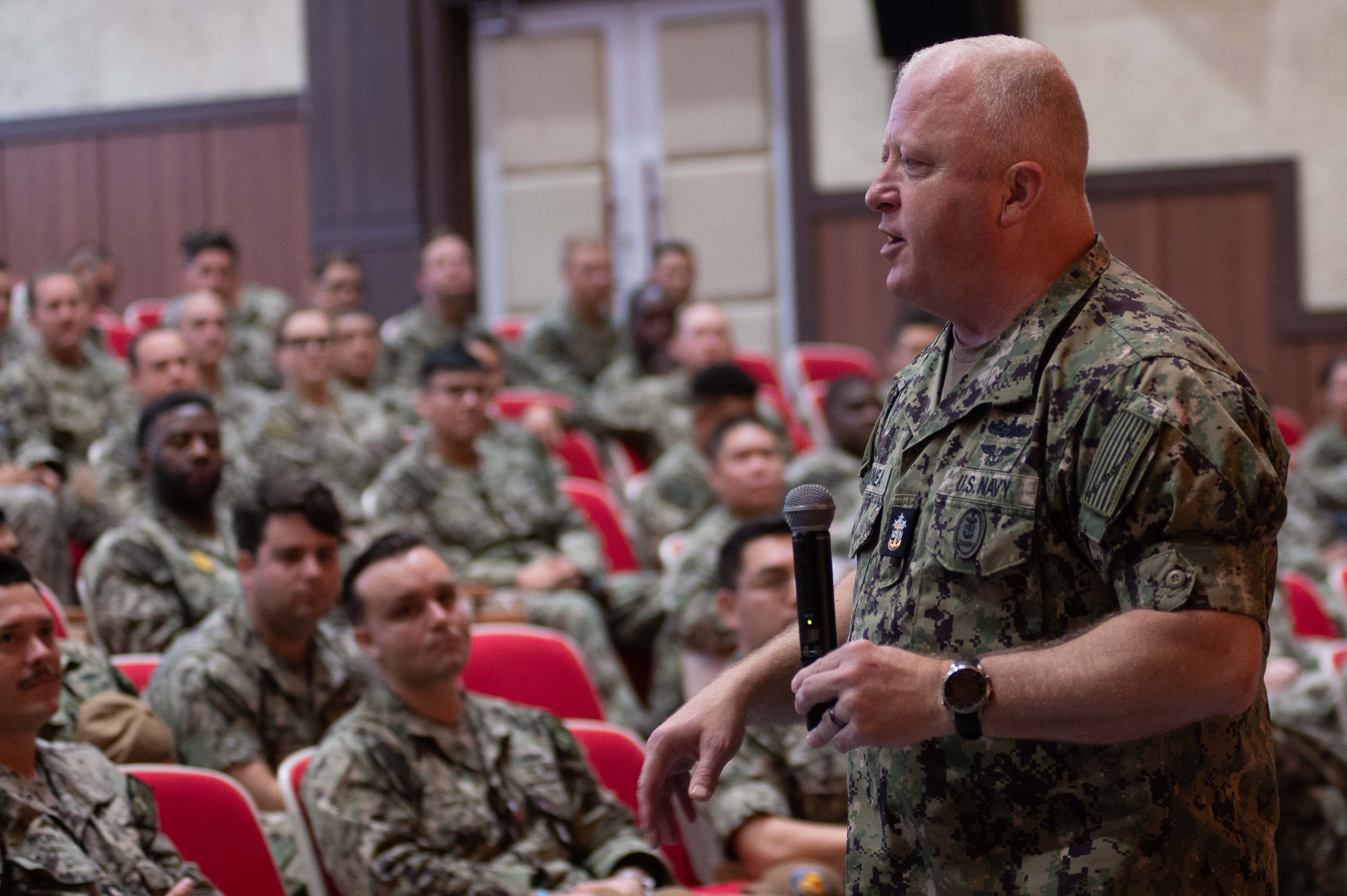
Master Chief Petty Officer of the Navy James Honea, last month, issued calls to action to chief petty officers, asking them to build up sailor skills through training and character development.
Honea’s July letters focus on warfighting competency and character development. A fourth letter, focused on quality of life for sailors, is still pending, USNI News understands. The letters come as Honea enters his second year as MCPON.
The letters come as the Navy continues to struggle to meet its recruiting numbers. Although the Navy does not publicize its recruiting numbers until the end of the fiscal year, Vice Chief of Naval Operations Lisa Franchetti told Congress that there could be a gap of 6,000 sailors. The Navy has also almost depleted its delayed entry program, which is now down to 10 percent of the recruiting goal, Lt. Cmdr. Richard Parker, spokesperson for Recruiting Command, told USNI News.
Retention numbers have been typically good for the Navy, but the recruiting issues will put an additional strain on the service that will likely need to be filled by re-enlistments.
During his first months in office, Honea spent time visiting the fleet and hearing concerns. He often heard sailors talk about issues with medical appointments and pay, USNI News previously reported.
Honea took office in September 2022, and he said in his first letter to the Chief Petty Officers’ Mess he spent the first year deciding what changes he wanted to implement during his tenure. The letters to the chiefs lay out how the sailors will help implement these changes.
“Every day we need to invest in our sailor’s technical training, their education, their physical and emotional health, and the health and safety of them and their families – this is our responsibility as Chief Petty Officers,” Honea wrote in the letter. “When we invest in our sailors, we create effective combat teams; teams that demand the highest standards and do not accept failure.”
The first call to action came out with Honea’s summary letter on July 24. It focused on warfighting competency.
“Every sailor deserves a Chief Petty Officer that is an expert in their rating and is the technical authority – a Chief that has a plan for building winning combat teams and executing any and all missions that are assigned,” reads the letter.
The warfighting competency letter is meant to encourage chief petty officers to look ahead and plan for the future. The Navy already does well at handling the day-to-day and emergencies, Honea wrote. But a successful chief can forecast to see what problems might occur and have a plan.
“Chiefs need to understand their maintenance, administration, training, and all other things that must be done – they must know when to do it, and how it needs to be done,” reads the letter.
The letter also encourages training and education, allowing chief petty officers to better the sailors under them. Continuous learning should be a priority, Honea wrote, and chiefs should pass that lesson down to the sailors as well.
The goal is to have sailors who are able to maintain the platforms the Navy uses.
“Chiefs occupy a privileged position in the Navy and as such, the Navy expects a great deal from its Chiefs,” Honea wrote. “We have much work to do in this area and I need you to look hard at your skills, find the gaps in your knowledge, and shore them up.”
Honea also encouraged professional and character development in his second call to action. Sailors need to have chiefs who are invested in them, Honea wrote.
“Chiefs are responsible for the all-around training of personnel assigned to their supervision. Chiefs develop leaders with strong character, diverse perspectives, and resilience,” Honea wrote. “We must recruit, retain, and effectively manage the talent of a diverse workforce to unleash their full potential at any given moment.”
The call to action encouraged chief petty officers to start with sailors as soon as they get orders. Helping a sailor get indoctrinated into the command starts off a good relationship and helps a sailor know the resources available to them, according to the letter.
A chief that invests in professional and character development helps build trust and confidence in a team, Honea wrote.
“When your sailors know you are invested, you prove to them they are in a safe environment,” Honea wrote. “Be relevant – if your sailors are not coming to you for guidance or seeking assistance with their issues, you may not be relevant to them.”
Honea is expected to release another call to action, which will focus on quality of life.





